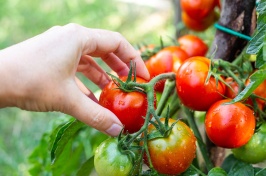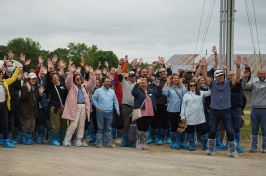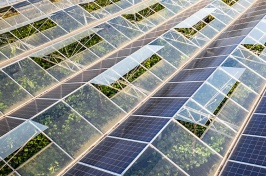
Since its establishment in 1887, the New Hampshire Agricultural Experiment Station (NHAES) has pioneered innovative research, nurturing sustainable solutions for agricultural, food, and environmental challenges, enriching every corner of the Granite State. Through pioneering interdisciplinary initiatives and state-of-the-art facilities, NHAES remains dedicated to propelling positive change, empowering communities not only within New Hampshire but also beyond its borders. Below, you'll discover news and information about just some of the NHAES research that has had wide-ranging impacts on agriculture and food production; natural resources protection and conservation; and nutrition, health and wellness across the Granite State and throughout the Northeast.
 Tuesday, November 18, 2025UNH research focuses on extending the shelf life of fruits and vegetablesOnce the stem snaps at harvest, a race begins between biology and decay, and when produce begins to decay, farmers lose income, grocers lose stock, and consumers lose flavor. Researchers at UNH are exploring the complex process of ripening, with the goal of developing ways to maintain post-harvest firmness and flavor for far longer than currently possible. The research into preserving ripeness,...
Tuesday, November 18, 2025UNH research focuses on extending the shelf life of fruits and vegetablesOnce the stem snaps at harvest, a race begins between biology and decay, and when produce begins to decay, farmers lose income, grocers lose stock, and consumers lose flavor. Researchers at UNH are exploring the complex process of ripening, with the goal of developing ways to maintain post-harvest firmness and flavor for far longer than currently possible. The research into preserving ripeness,... Thursday, November 13, 2025UNH study pinpoints how to help a popular New Hampshire fishery remain viableThe New Hampshire Fish and Game Department calls striped bass “by far the most sought after fish along the New Hampshire coast,” and recreational anglers pursuing striped bass contribute more than $100 million to the Granite State’s economy and support more than 1,600 jobs. But annual surveys indicate that the population is in decline, threatening the major recreational and commercial fisheries...
Thursday, November 13, 2025UNH study pinpoints how to help a popular New Hampshire fishery remain viableThe New Hampshire Fish and Game Department calls striped bass “by far the most sought after fish along the New Hampshire coast,” and recreational anglers pursuing striped bass contribute more than $100 million to the Granite State’s economy and support more than 1,600 jobs. But annual surveys indicate that the population is in decline, threatening the major recreational and commercial fisheries... Wednesday, October 08, 2025A new direct marketing agreement rejuvenates decades-long private–public research and teaching connection in New HampshireIn September 2025, the Organic Dairy Research Farm at the University of New Hampshire (UNH) began shipping milk directly to the Stonyfield Organic processing facility in Londonderry, New Hampshire, a move that will further strengthen the more than 20-year partnership between the New Hampshire based company and the state’s land-grant university. The recent direct marketing agreement is also...
Wednesday, October 08, 2025A new direct marketing agreement rejuvenates decades-long private–public research and teaching connection in New HampshireIn September 2025, the Organic Dairy Research Farm at the University of New Hampshire (UNH) began shipping milk directly to the Stonyfield Organic processing facility in Londonderry, New Hampshire, a move that will further strengthen the more than 20-year partnership between the New Hampshire based company and the state’s land-grant university. The recent direct marketing agreement is also... Tuesday, September 16, 2025UNH researcher Constantine Spandagos leads interdisciplinary efforts to transform energy systems for a more sustainable futureDependable energy is a vital component of modern life, but relative to other states, New Hampshire residents have among the highest electricity costs and below-average reliability. However, adopting new systems to meet long-term energy needs is a much more complex challenge than it appears at first glance. An emerging research program at the College of Life Sciences and Agriculture (COLSA) at the...
Tuesday, September 16, 2025UNH researcher Constantine Spandagos leads interdisciplinary efforts to transform energy systems for a more sustainable futureDependable energy is a vital component of modern life, but relative to other states, New Hampshire residents have among the highest electricity costs and below-average reliability. However, adopting new systems to meet long-term energy needs is a much more complex challenge than it appears at first glance. An emerging research program at the College of Life Sciences and Agriculture (COLSA) at the...
Upcoming COLSA & NHAES Events
-
Jan2211:00am - 12:00pm, The Master of Science in Nutrition and Dietetics program encourages all interested candidates to join us for a virtual open house to learn more about our program Please join us for one of our virtual open house on Thursday, January 22nd from 12:30-1:30p ET, register here.We also accommodate in-person and virtual meetings with current students and/or the MSND Director. For more information, please contact Dr. Taetzsch.We look forward to meeting you!




